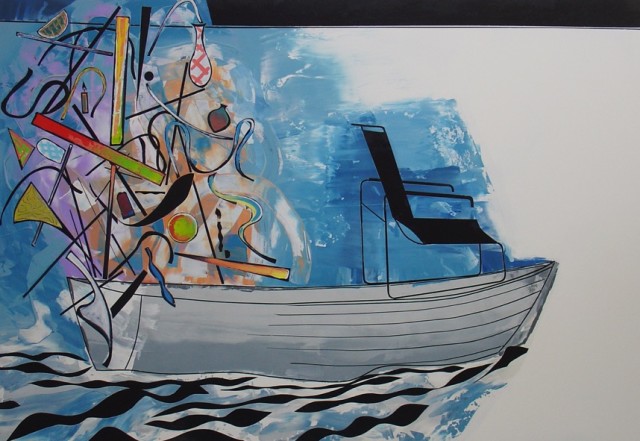Fokidos 21 is pleased to present Architecture of Enjoyment, an exhibition of contemporary art and design made by an international selection of artists, architects and designers, curated by Marcelle Joseph.
Inspired by French philosopher Henri Lefebvre's forgotten manuscript entitled Toward an Architecture of Enjoyment written in 1973 and published for the first time in 2014, this exhibition will feature the visual art of five artists displayed alongside chairs and a side table designed by six designers or architects. In this text, Lefebvre argues for a "concrete utopia" removed from the everyday, the workplace and the market economy as well as all things political and governmental, seeking to conceive of a new space centred around enjoyment. Using the city of Benidorm along Spain's Mediterranean coastline as a point of departure, Lefebvre sought to extend the notion of architecture to include furniture, gardens, parks and even landscapes and to obliterate the monotony of repetitive elements in twentieth-century architecture co-opted by the powers of capitalism.
In this exhibition, replacing the Costa Blanca high-rises of Benidorm with an artist-run space in the Mediterranean city of Athens, each of the five artists have been paired with a designer or architect to create their own mini- architectural "environment of enjoyment".
Rachael Champion's large-scale, dramatic site-specific installation on the roof terrace, consisting of a carefully orchestrated arrangement of industrial materials (steel tubes and rubble sacks) and ecological matter (turf and blue mulch) and questioning humanity's relationship with the natural world, is paired with a chair made out of coloured lay-flat hose and steel by the London architectural practice Variant Office, creating an otherworldly urban garden of sorts - a place for reflection while enjoying the skyscape of Athens.
Bobby Dowler's new abstract object paintings in striking Mediterranean colours were created during a residency in Tuscany at the Villa Lena and hang in front of a studio stool made by artist Christopher Green from found wood and realised in the aesthetic and pragmatic spirit of Italian furniture designer/artist Enzo Mari. The stool sits next to a side table made by designer Anton Alvarez, using his Thread Wrapping Machine, a machine that creates objects by binding pieces of material, such as wood, steel or plastic, in thousands of metres of thread while coating them in glue. One imagines a viewer, perched on Green's studio stool with a demitasse of espresso resting on the Alvarez side table, peering out through Dowler's monochrome sky blue painting.
Gabriel Hartley's tentacled and twisting sculpture sits astride his studio chair, covered in layers of paint, and gazes upon Hartley's rich, highly impastoed abstract painting that incorporates some of the same robust hues as the chair, lending a time-based performative element to the work and enabling his three-dimensional work to become the central figure of this architecture of enjoyment, glancing out into a swirling mass of bold linear brushstrokes, applied in layers using a combination of oil, spray paint, ink and resin to convey a beguiling mixture of flatness and depth. The chair was made by disabled people employed by the now defunct Remploy at one of its former specialised factories subsidised by the UK government.
Sofia Stevi's thirty-six small-scale collage sculptures made from cast plaster, found objects and other materials act like punctuation marks scattered around and place under the legs of three classic swivel stools designed by Greece is for Lovers with a Greek twist. The seat of these stools is made from a massive pebble stone found on the Aegean coastline by the designers. Stevi has become increasingly interested in the idea of manual reproduction and the lightness, clarity and historical value of plaster as a material. In this environment of enjoyment, Stevi's diminutive artworks become other stones on the beach and the found objects encased in them are transformed into other treasures found in the sand such as shells or fossils while the stools stand tall and unwavering, not unlike the Mediterranean cypress trees overlooking the beachscape.
David Ben White's functional sculpture, inspired by the ubiquitous Greek architecture found in the Cycladic islands that is painted white to reflect the harsh summer sun, sits on a side table illuminating two other wall-based works by the same artist. One of these paintings depicts a boat moving through the waves with a modernist chair at the helm. The installation as a whole alludes to ambiguous territories with external elements brought inside and internal elements brought outside. White's work is juxtaposed with Studio LW's chairs modeled on the stage set design of artist Sonia Delaunay from a 1926 film called 'Le P'tit Parigot', directed by Rene Le Somptier. This collaborative environment nods to the utopian idealism of modernist architecture and design as well as the balmy Mediterranean climate that has been enjoyed by Greeks throughout their country's long history.









